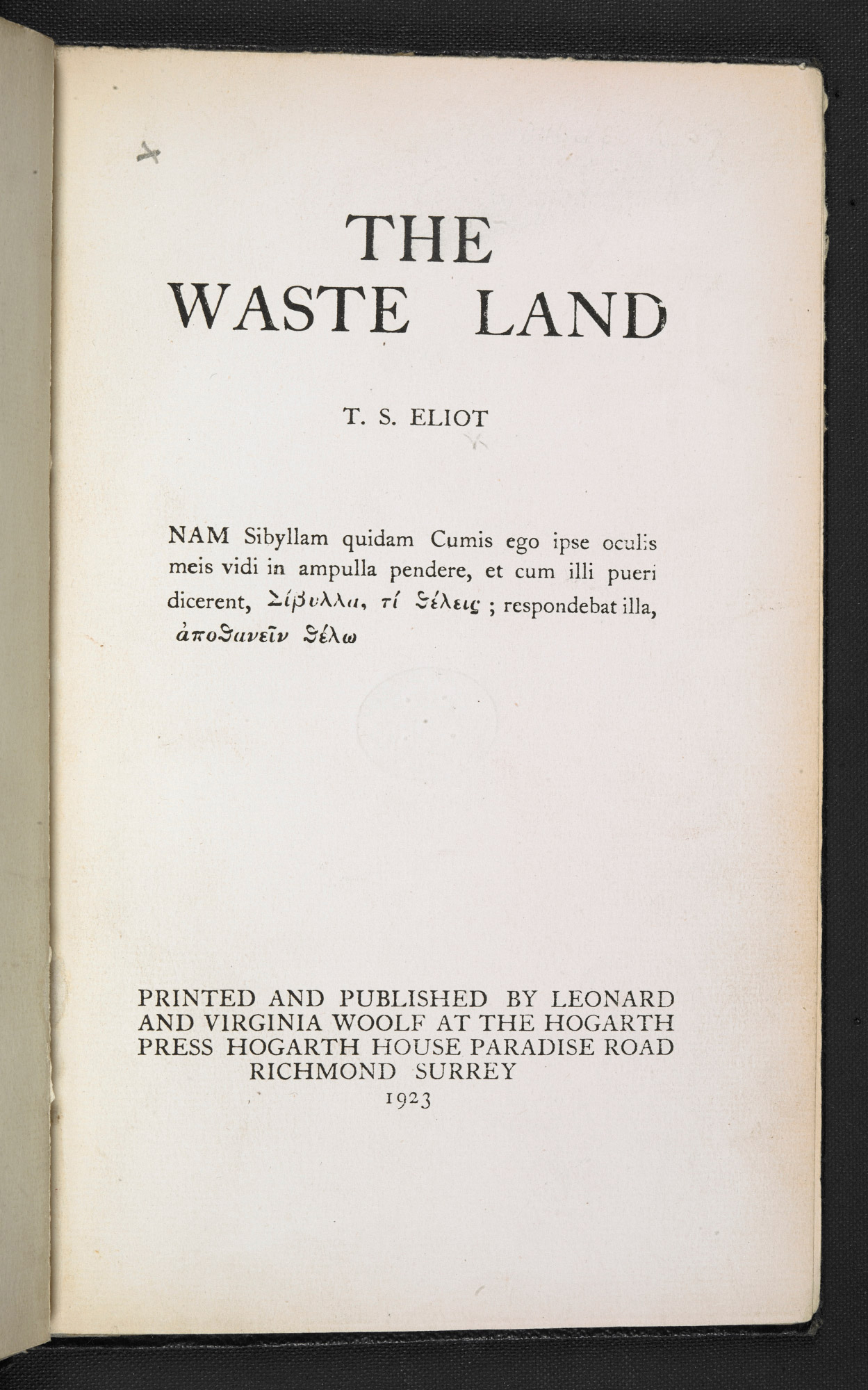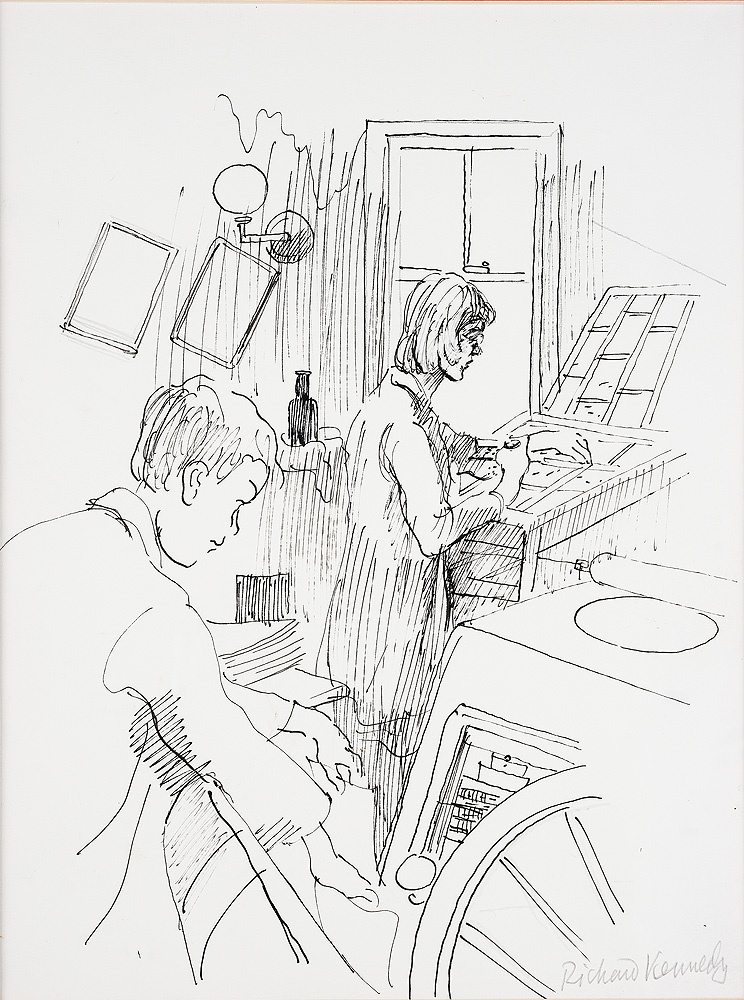July 8, 1923: Virginia Woolf is T.S. Elliot's hand typesetter for Hogarth Press
“I have just finished setting up the whole of Mr. Eliots [sic] poem with my own hands – you see how my hand trembles” wrote on July the 8th of 1923, Virginia Woolf, author, editor, publisher and typesetter for the freedom of the press. Woolf had just completed her work hand typesetting the first English edition of T.S. Eliot’s The Waste Land. The book, published by Woolf and her husband Leonard’s’ Hogarth Press is just one of many publications which the Woolfs typeset and published by hand.
The book, printed in 460 copies has been considered a rare gem in printing for numerous reasons and a rare UK first edition of The Waste Land has been bought at auction by the University of St Andrews for £4,500 after being donated to Oxfam in 2013. Woolf put out 460 copies of the poem in 1923 through Hogarth Press, the publisher that she and her husband Leonard had created to publish her writing. “Woolf had difficulty with the typography because of the way Eliot would write, the rhythm and space used in his poems, and she had a bit of trouble getting the typeface right” said Lydia Wilkinson, books specialist at auction house Bonhams, which handled the sale on behalf of Oxfam to The Guardian.

The Waste Land by T S Eliot, 1923, The Hogarth Press, © Estate of T. S. Eliot via the British Library
“On the afternoon of 23 March 1917 Leonard and Virginia Woolf were walking down Farringdon Road in London when their attention was caught by the window display of the Excelsior Printing Supply Company” writes Duncan Heyes, curator in Printed Heritage Collections and Contemporary British Published Collections, in his article for Woolfs' Hogarth Press.
“They had been discussing the possibility of taking up printing for a while, and towards the end of 1916 decided that they would definitely do it. They had even gone as far as enquiring about enrolling at St Bride School of Printing, only to be turned down because courses were only open to trade union apprentices whose numbers were strictly controlled. Nevertheless, undeterred they entered the small printing supplier and explained their plight. They were greeted by a helpful assistant in brown overalls who convinced them that with the aid of a 16-page booklet they would be able to teach themselves all they needed to know to get started. So, for the sum of £19 5s 5d the Woolfs became the proud owners of a small hand-printing press, some Old Face type, and all the other necessary paraphernalia to begin their printing endeavour. The printing press was duly installed on the dining room table at their home Hogarth House, which gave the Press its name. After a month of experimentation, setting type and inking blocks, the Woolfs felt confident enough to print a page of a book. Their first publication, Two Stories, appeared in July 1917. In its first five years the Hogarth Press published works by Katherine Mansfield, T S Eliot, E M Forster, Clive Bell, Roger Fry and Sigmund Freud.”

“The whole process of printing and production (except in one instance) is done by ourselves” wrote Woolfs in a flyer announcing the Hogarth Press circa 1919 via the British Library
From the time of its inception in 1917 until Leonard Woolf sold the Hogarth Press in 1946, only 34 of the 525 Press publications were printed by hand. “Printed and bound by Leonard and Virginia Woolf, they are fascinating examples of amateur bookmaking” notes Smith College which owns a dozen of the hand-printed titles. “The illustrator Richard Kennedy worked at the Hogarth Press from 1928 to 1930. In one of his original drawings, Virginia Woolf is seen setting the type for Herbert Palmer’s poems. Kennedy feeds a platen press in the foreground. George (“Dadie”) Rylands, who was also an assistant at the Hogarth Press, published two volumes of poems, one of which is on display. Setting type and binding books were therapeutic activities for Virginia Woolf. She was trained by bookbinder Sylvia Stebbing.”

Richard Kennedy. Virginia Woolf Setting Type: ink and graphite drawing, n.d. This was an illustration for Kennedy’s A Boy at the Hogarth Press (London, 1972). Presented by Elizabeth P. Richardson ’43 via Smith College
Tags/ printing, book, typesetting, poetry, author, virginia woolf, poem, hogarth press


















